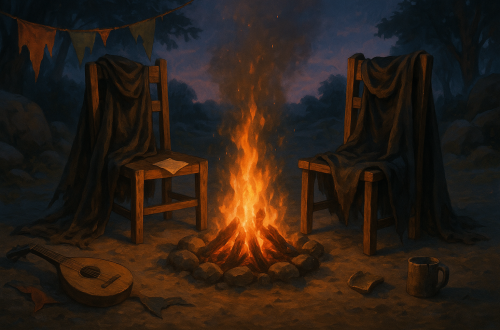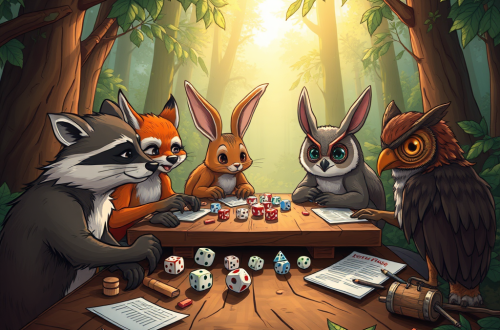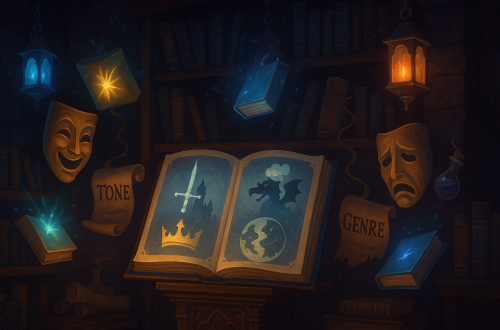How I Use Emotional Safety Tools Without Censoring My Table
When people hear “safety tools”, they have one of two reactions. They breathe a sigh of relief: Finally — a table where I can dive deep without fear. Others groan, bracing for a session of hand-holding and trigger warnings that seem to outnumber the dice rolls.
Here’s the thing: I’m not interested in either extreme.
I don’t want a game where everyone’s walking on eggshells.
And I’m not trying to run a table where “oops, you got traumatized” is just part of the fun.
I want the third path, which is a deliberate, emotionally intelligent approach to storytelling where players feel brave, not coddled. Tabletop games work best when everyone has enough trust between them that they know they aren’t going to be bullied, yelled at, sexually harassed, or any number of other issues.
This isn’t about coddling. It’s about crafting a table where players are brave enough to break, because they know what’s holding them.
What Emotional Safety Is
Let’s clear the air:
- It’s not censorship.
- It’s not therapy.
- It’s not about making sure no one ever feels uncomfortable.
It’s just a way to make sure that the discomfort we invite into the story is on purpose. We aren’t just hurting someone’s real feelings, or killing someone else’s fun.
Think of it like climbing gear: you’re still scaling cliffs. Still risking the fall. You just know the rope’s there before someone hits the rocks.
Why I Care (Personal Story-Time!)
I was running a classic fantasy campaign — you know the type: crumbling castles, talking swords, destinies no one asked for. One of my players, Jules (fake name), had written a bard with a complicated past. Her character had been cast out by her noble family — not for scandal, but for simply not fitting the mold. Too loud, too odd, too unwilling to play the part.
It was a rich, juicy backstory. Fuel for all kinds of character growth.
A few sessions in, during a tense scene at court, another player — perfectly in character — scoffed and said, “Well, maybe your family was right to toss you aside.”
It got a laugh. The table moved on.
But Jules didn’t.
She went quiet. Played the rest of the session with this heavy, hollow tone. Later that night, she messaged me:
“Hey, I know it was in character. But that line hit harder than I expected. I’ve always felt like the odd one out in my own family, and hearing it said out loud — even in a game — just kinda shut me down.”
No one meant harm. No lines were crossed on purpose.
But that’s the point — we didn’t have a shared system for saying, “Hey, this stung,” without derailing the game or forcing someone to explain their whole life.
That’s when it clicked: safety tools aren’t there to make the story nicer.
They’re there to make it navigable.
So that when we press on real scars — and sometimes we will — we know how to respond.
Because the story can go anywhere.
But the players should never be lost.
What It Looks Like in Practice
Here’s what emotional safety looks like at my table — not in theory, but in actual play:
- Lines and veils help players know where the story can go, and where it shouldn’t.
- Stars & Wishes give every player — even the quiet ones — a voice in shaping the arc.
- Tools like the X-card don’t interrupt immersion — they protect it.
- I’ve run campaigns full of betrayal, heartbreak, horror, even character death — and they hit harder because players trusted the space.
The truth: Safety tools aren’t about limiting drama. They make sure it’s the right kind — intentional, earned, and safe to explore.
Why This Isn’t About Being “Soft”
Let’s say it straight:
I’m not interested in “nice.”
I want my players to cry because their character lost something that mattered — not because they were caught off guard and didn’t know how to say so.
I want pain that means something.
Not pain that spills out because we forgot to set the table.
Emotional safety tools aren’t about making games soft.
They’re about making them sharp with intent.
They give players permission to lean in — to be bold, messy, complicated — without fearing they’ll stumble into something that breaks them out of character and out of the game.
A Middle Path (Invitation)
You don’t have to choose between the sterile safety of group therapy or the lawless chaos of “anything goes.”
There’s a third way — a trail through the woods where danger is real, stakes are high, and no one’s walking blindfolded into a bear trap.
You can play hard because the space is held.
That’s not soft. That’s smart.
Comfy Doesn’t Mean Censored
Comfortable players aren’t fragile — they’re ready.
And safe doesn’t mean sanitized. It means equipped.
These tools aren’t padding — they’re part of the architecture.
They don’t stop the story from hitting hard. They make sure it hits where it should.
And it lets players go deeper, push harder, and walk away full instead of frayed.
So tell me:
What’s your relationship to safety tools? Have they made your games stronger — or just sanitized?
Drop a comment. Let’s talk about the tools that make our tables braver.




